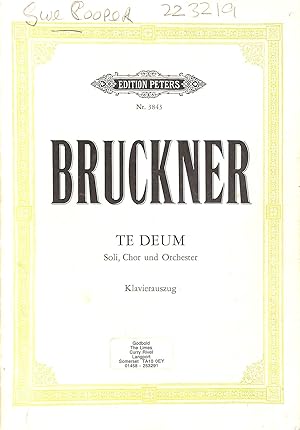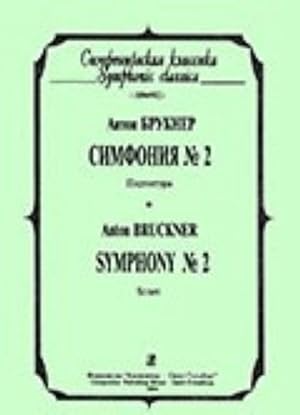Brukner Anton (2 results)
FeedbackSearch filters
Product Type
- All Product Types
- Books (2)
- Magazines & Periodicals (No further results match this refinement)
- Comics (No further results match this refinement)
- Sheet Music (No further results match this refinement)
- Art, Prints & Posters (No further results match this refinement)
- Photographs (No further results match this refinement)
- Maps (No further results match this refinement)
- Manuscripts & Paper Collectibles (No further results match this refinement)
Condition
Binding
- All Bindings
- Hardcover (No further results match this refinement)
- Softcover (2)
Collectible Attributes
- First Edition (No further results match this refinement)
- Signed (No further results match this refinement)
- Dust Jacket (No further results match this refinement)
- Seller-Supplied Images (2)
- Not Print on Demand (2)
Free Shipping
- Free Shipping to U.S.A. (No further results match this refinement)
Seller Rating
-
Te Deum: Fur Vier Solostimmen Chor Und Orchester
Published by CF Peters, 1999
Seller: M Godding Books Ltd, Devizes, WILTS, United Kingdom
Paperback. Condition: Good. Sheet music in paperback book. Te Deum: For Four Solo Voices Choir And Orchestra by Bruckner. Pencil marginalia. German and Latin language. Deutsch und Lateinische Sprache. Posted within 1 working day. 1st class tracked post to the UK, Airmail with tracking worldwide. Robust recyclable packaging. Picture is the actual item.
-
Symphony No. 2. Pocket score.
Published by Compozitor (SPb.), 2010
ISBN 10: 5061588576 ISBN 13: 9785061588575
Seller: Ruslania, Helsinki, Finland
Condition: new. Pages: 168 Language: Russian, English. 145 mm x 205 mm Anton Bruckner (18241896) the Austrian composer, organist, pedagogue, one of the most piominent symphonists living in the second half of the 19th century. His creation embraces 11 symphonies (two of them are numberless), Requiem, Magnificat, ?? Deum, four masses, series of choral compositions, string quintet. Bruckner's artistic career was really noteworthy. The boy originated from the family of musicians. His talented nature was revealed very early. When Anton was ten the grown-ups entrusted the Sunday services to be conducted by him instead of the village organist. However, Bruckner himself did not consider the composition activity to have been started before he was fourty. That time he was already recognized as the organist- improvisor and choir-master. The Second Symphony's drafts (actually it was the fourth one appeared) were made by the composer in August, 1871 during his triumphal London tour as the organist. The symphony's score was coinpleted ? July, 1872 in Vienna. The first movement and Finale were completed firstly, then the Scherzo and Adagio followed. The Second Symphony takes special place in Bruckner's creation for its clarity and accessibility, even among his ???? well-known significant compositions. There is also the Bruckner's peculiarity induced by him for the first time, i. e. the score is provided by citations from Bruckner's own opuses. ???? you are the themes from the Grand ?ass F minor; the "Benedictus" in Adagio and "Eleison" (from the "Kyrie") in Finale. The author himself supposed there would be the possible excision (from the letter 0 to the 21st bar after the letter R; here indicated as "Vi-", "-d?"). Bruckner agrtxxi to please the critics, reproaching him of two long movements. Nowadays this should be the conductor to decide, whether the excised fragment is performetl Meanwhile it's rather essential for the Finale's structure. Soon the Symphony No 2 was rejected by Otto Dessoff and the Vienna Pholharmonic Orchestra as inpracticable one. The author was forced to conduct himself. It happened ? year later on October 26, 1873 at the World Exhibition's closing, when the Second Symphony was firtly performed in the Viennese Musical Society's Hall. Bruckner also showed his skill as the organist in the same very concert. Subsequently' Bruckner returned to this score and not once (in 1873, 1876, 1877, 1892) for to concise it and to make some instrumentation emeudations. This exact publication represents the version dating 1928, reconstructed by Joseph Wooss on the base of Bruckner's manuscripts. 9785061588575.



